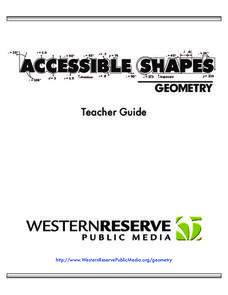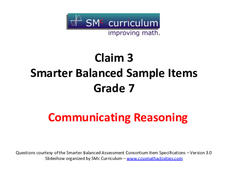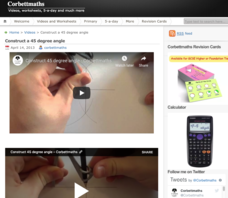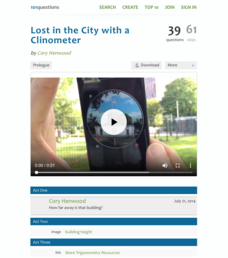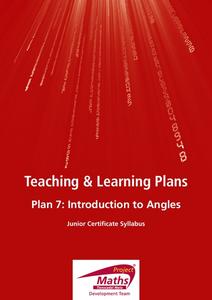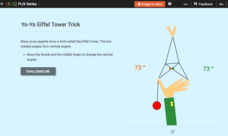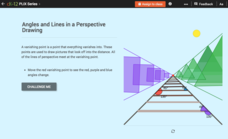Purdue University
Design of a Green Roof
Help scholars develop a green thumb by building a green roof. Groups first grow lettuce seeds under normal conditions, then they try to grow the seeds in trays that are slanted by 45 degrees. They learn about tropism and engineering...
PBS
Accessible Shapes
All the 2-D and 3-D measurement work you need is in one location. Divided into three sections, the geometry lesson plans consist of visualization of three dimensions, classifying geometric figures, and finding surface area and volume....
Discovery Education
Stomp Rockets
Watch the excitement grow as learners experiment with homemade rockets. Pupils create their own rockets from a soda bottle and experiment with launch angles. They discover the launch angle has a significant effect on the distance the...
CCSS Math Activities
Smarter Balanced Sample Items: 7th Grade Math – Claim 3
Does the explanation make sense? Sample items highlight claim three, communicating reason, in the Smarter Balanced assessments. Teachers use the 16 items to help show pupils the importance of communication and reasoning within...
Corbett Maths
Constructing Equilateral Triangles and 60 Degree Angles
Creating a 60-degree angle also creates an equilateral triangle. By watching the video, individuals learn the steps required to construct a 60-degree angle. The presentation shows that the process is the same for constructing an...
CCSS Math Activities
Smarter Balanced Sample Items: 7th Grade Math – Target F
Sometimes it's how you ask the question that counts. The sixth installment of nine from the Smarter Balanced Claim 1 Slideshow series presents a set of 13 questions to assess understanding of angle relationships as well as area and...
Mathed Up!
Bearings
Keep the math straight and true. Using information learned about angle relationships, pupils determine drawn bearings, or draw a line with a given bearing. The accompanying video provides the definition of a bearing and its three...
Corbett Maths
Construct a 45 Degree Angle
Create a 45-degree angle without bisecting an angle. A video shows a method to construct a 45-degree angle without needing to bisect a right angle. By constructing an isosceles right triangle, the presenter constructs a 45-degree angle...
Corbett Maths
Construct a 30 Degree Angle
Split it down the middle. Using the tools of geometric construction, the video shows two different methods of constructing a 30-degree angle. The first method bisects an angle of an equilateral triangle. The second uses the diagonal of a...
Concord Consortium
In a Triangle
What's in a triangle? Just 180 degrees worth of angles! Young learners use given angle relationships in a triangle to write an algebraic representation. Using a system of equations, they simplify the equation to a linear representation.
Concord Consortium
Triangles: Angle Space
Three angles in a triangle, three-dimensional space, it all seems connected somehow. Given several different triangles, pupils use the three angles of the triangle as coordinates to plot points in three-dimensional space. They explore...
Magic of Physics
Planetary Rescue Squad
Ready, aim ... learn! Increase scholars' understanding of force, mass, distance, and angle using an engaging interactive. Pupils participate in a series of rescue missions where they launch supplies at a target with an adjustable cannon....
101 Questions
Lost in the City with a Clinometer
Come look at trigonometry from a different angle. To begin a simple activity, scholars view a video of someone using a clinometer to find the angle of elevation to the top of a building. They then use a diagram that shows the building's...
101 Questions
Canadian Thanksgiving Tradition
It's all about the portion size! Given a photo of a pumpkin pie, learners work to determine the number of calories that are missing. Supplemental information provides the angle of the piece that is missing as well as the nutritional...
Project Maths
Introduction to Angles
Approach the lesson from the right angle. A discussion-based lesson leads helps learners understand angles in terms of rotation. Individuals use manipulatives to explore the properties of angles and learn how to name them. The lesson is...
101 Questions
Best Triangle
What makes an equilateral triangle equilateral? It turns out it's much more than just the side lengths! Learners analyze four different triangles to determine the best equilateral triangle. They create a formula that they later use to...
Concord Consortium
Double Pendulum
What's better than a pendulum for studying motion and periods? A double pendulum! Young physical scientists use an interactive to explore pendulum motion—times two. The resource boasts a host of parameters to change and a running graph...
Concord Consortium
Pendulum and Spring
Up, down, back, and forth. When you make a pendulum out of a spring, there's a lot to observe. Aspiring masters of motion examine the combined kinetic energies of spring and pendulum motion using a detailed interactive. Learners observe...
CK-12 Foundation
Proofs: Angle Pairs and Segments—The Three Angle Problem
Finding the sum of the measures of three angles is easy, unless you have no clue what the measures are. Learners use an interactive diagram to see a geometric problem in a different way. A set of challenge questions takes them through...
CK-12 Foundation
Supplementary and Complementary Angle Pairs
Complement and supplement your knowledge of angles. Young mathematicians study supplementary and complementary angle pairs using an interactive. A set of challenge questions solidifies this understanding.
CK-12 Foundation
Vertical Angles: Yo-Yo Eiffel Tower Trick
Yo, yo, learn about vertical angles with a yo-yo. Using an interactive, scholars adjust the position of fingers holding a design from a yo-yo. Answering a set of challenge questions based on the interactive helps clarify understanding of...
CK-12 Foundation
Vertical Angles
Examine vertical angles from a different angle. Moving one line in an intersecting pair of lines lets users see relationships between vertical angles. They finish by answering some machine-scored questions on the topic.
CK-12 Foundation
Linear Pairs: Angles and Lines in a Perspective Drawing
Gain some perspective on linear pairs. Aspiring mathematicians adjust the vanishing point on a perspective drawing. They see the effect on linear pairs of angles and answer five challenge questions based on their observations.
CK-12 Foundation
Linear Pairs
Pair up this resource with a lesson on linear pairs. Scholars solve for missing variables and values of angles in linear pairs. They use an interactive to help with this endeavor.



